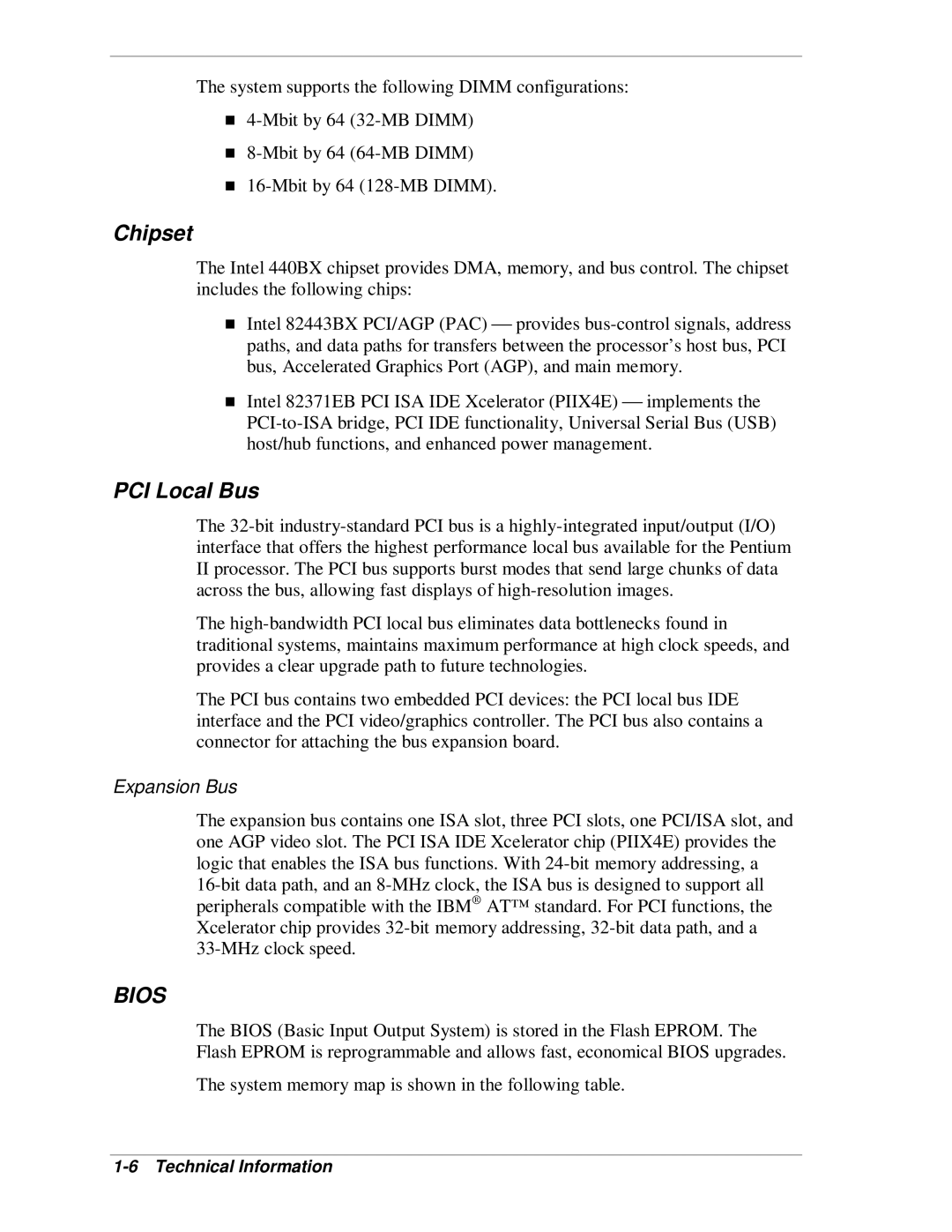
The system supports the following DIMM configurations:
T
Chipset
The Intel 440BX chipset provides DMA, memory, and bus control. The chipset includes the following chips:
Intel 82443BX PCI/AGP (PAC) ⎯ provides
Intel 82371EB PCI ISA IDE Xcelerator (PIIX4E) ⎯ implements the
PCI Local Bus
The
IIprocessor. The PCI bus supports burst modes that send large chunks of data across the bus, allowing fast displays of
The
The PCI bus contains two embedded PCI devices: the PCI local bus IDE interface and the PCI video/graphics controller. The PCI bus also contains a connector for attaching the bus expansion board.
Expansion Bus
The expansion bus contains one ISA slot, three PCI slots, one PCI/ISA slot, and one AGP video slot. The PCI ISA IDE Xcelerator chip (PIIX4E) provides the logic that enables the ISA bus functions. With
BIOS
The BIOS (Basic Input Output System) is stored in the Flash EPROM. The Flash EPROM is reprogrammable and allows fast, economical BIOS upgrades.
The system memory map is shown in the following table.
